Microsoft's Azure Silicon Architecture Team took to the Hot Chips virtual stage yesterday evening to discuss the heart of the new Xbox Series X, and the innovation it represents. The 'full' tech specs of the Xbox Series X were officially first shared back in March, and since that time we have garnered further insight into supporting hardware/software like DX12 Ultimate and the Xbox Velocity Architecture. At Hot Chips Microsoft, naturally, went deeper with some interesting details of the on-board GPU shared by the team.
The GPU in the Xbox Series X SoC is of particular interest to PC enthusiasts right now as it is the most detailed example of the AMD RDNA 2 architecture available. The Hot Chips presentation showed how the GPU fits within the console SoC, its structure, and its capabilities.
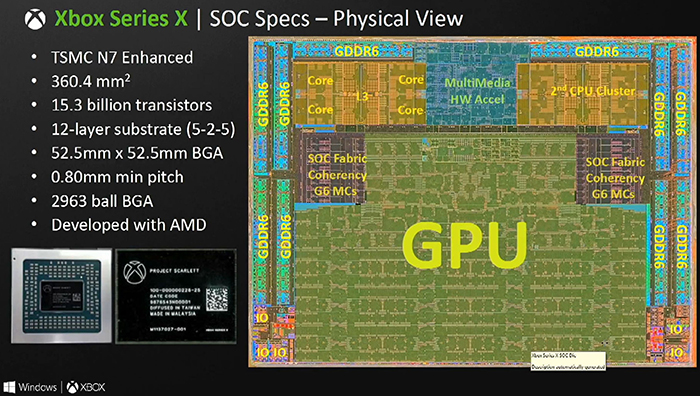
Above you can see a picture of the physical chip with various sub-components annotated and coloured. To create this TSMC N7 enhanced fabricated SoC with 15.3 million transistors, AMD/Microsoft has put together 3.8GHz Zen 2 server class CPU cores (8C/16T), 52 CUs based upon the RDNA 2 architecture, 16GB of 14Gbps GDDR6 memory on a 320-bit bus providing 560GB/s, and various multimedia hardware accelerators.
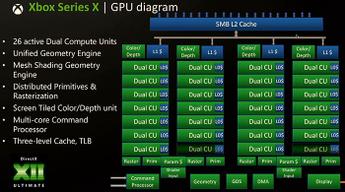 |
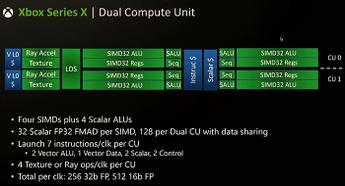 |
GPU block diagrams indicate how the RDNA 2 GPU cores work in the new console. The architecture uses 26 active dual CUs (to make 52 CUs total) and they have 25 per cent improved perf/clock compared to last gen. Below you can see a diagram showing that the new GPU easily outpaces the advancements in memory and available bandwidth over recent history.
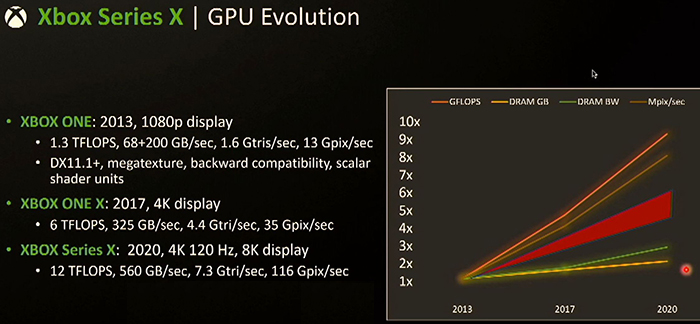
Microsoft recapped on other important supporting graphics technologies such as Variable Rate Shading, Sampler Feedback Streaming, Hardware Custom Residency Map Filtering, and DirectX Ray Tracing Acceleration. On the latter aspect, Microsoft said that its custom ray-box and ray-triangle accelerator units were capable of up to 380G/sec ray-box peak and 96G/sec ray-tri peak. That isn't all though; the Xbox Series X has other tricks available to developers thanks to its SoC design; ML inference acceleration for game character behaviour and resolution scaling, two virtualized command streams, and 32b HDR format for rendering, blending and display.
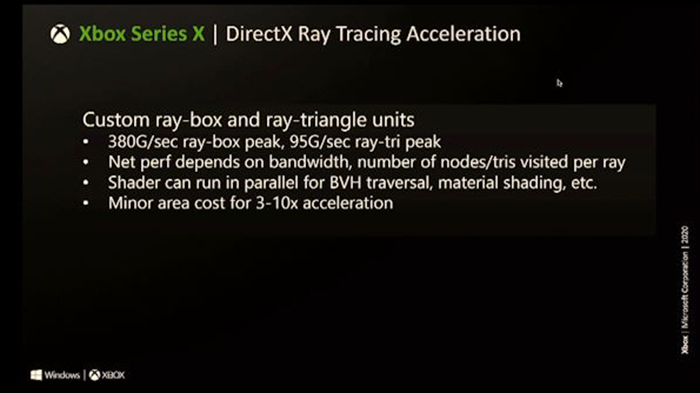
Later in the Q&As it was revealed that Microsoft uses the SMASH driver model which allows devs to hit the hardware and is "significantly more efficient than the PC".
Sources: AnandTech blog, Tom's Hardware.






